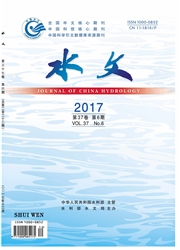

 中文摘要:
中文摘要:
氯离子质量平衡法(CMB)利用惰性示踪剂Cl-可以揭示区域地下水平均补给速率,补给事件和环境、气候变化事件等信息,可为相关研究提供可靠的信息。虽然该方法简单、有效,已经得到大量应用,但是也具有明显的局限性。综述了基于CMB法的相关研究,回溯了该方法的提出和演化,讨论了其主要假设条件和应用的局限性,阐明为了准确地应用该方法需要加强的方面。首先要重视氯离子干沉降的观测和研究。其次要加强氯离子沉降空间变化的观测和研究。在方法上要注意综合采用多种示踪剂、土壤理化性质和平行钻孔等手段来研究。最后要加强对氯离子平衡过程,及其相关的自然过程和人类活动的研究。对促进氯离子质量平衡法在地下水研究方面的应用和发展,具有一定的参考价值。
 英文摘要:
英文摘要:
Chloride is used as the inert tracer in the chloride mass balance method (CMB) to discover the variances of groundwater recharge rates and to offer reliable information about environment and climate changes. The method is simple and valid gaining a wide range of applications, although the limits are also obvious. In this paper, research based on CMB and evolutions of the method were widely reviewed. Hypotheses and limits were discussed. Future works were emphasized. Dry depositions of chloride need to be observed, and spa- tial variance of the depositions should be studied well. Muhi-tracers, soil properties and duplicated borehole should be employed to en- hance cross validations. The need of studies on the budget of chloride and the related natural processes and anthropogenie activities was highlighted. Our work contributes to promote the applications and developments of the method in groundwater hydrology.
 同期刊论文项目
同期刊论文项目
 同项目期刊论文
同项目期刊论文
 期刊信息
期刊信息
